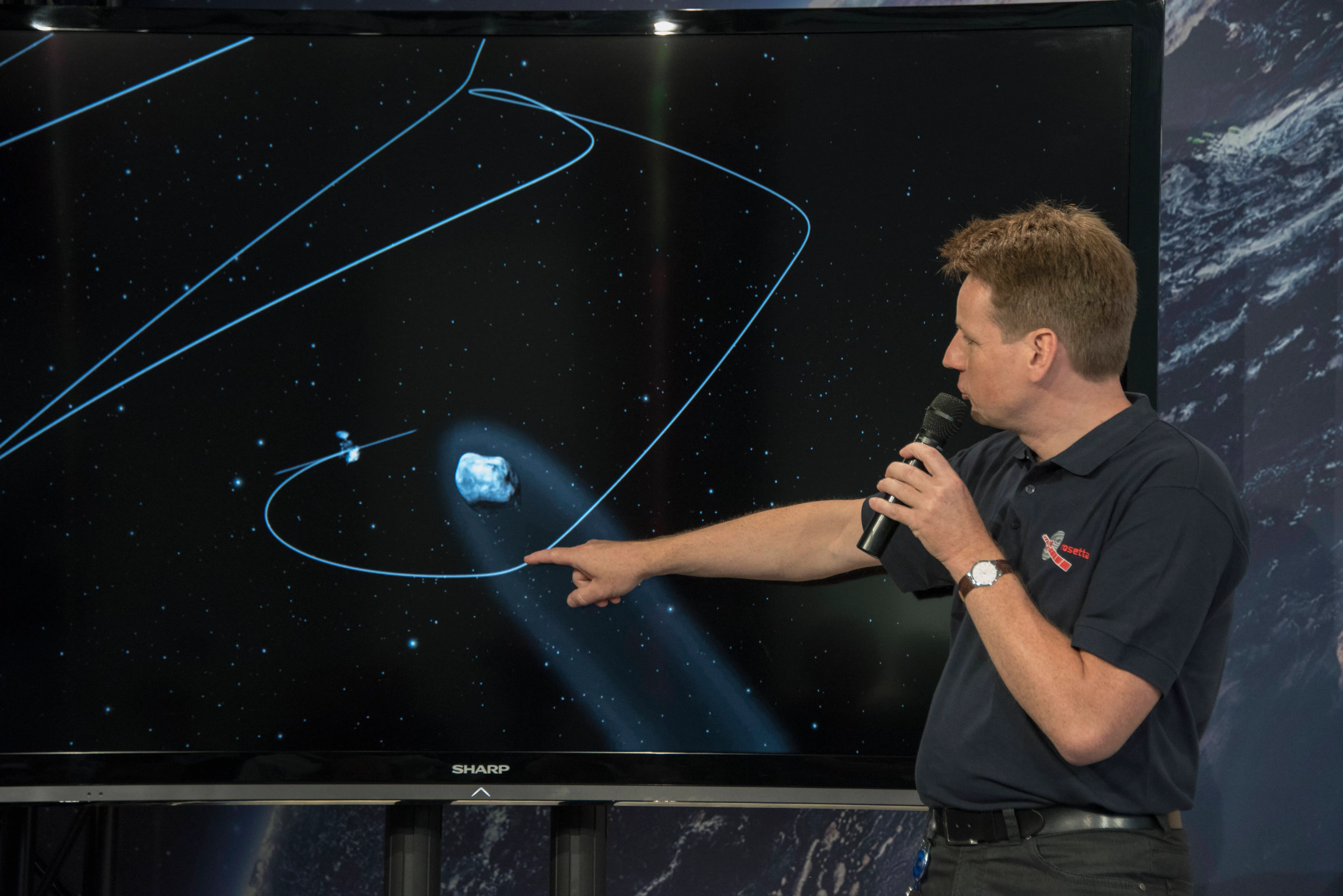3I/ATLAS has pushed the Planetary Defense Network into a coordinated watch, even as agencies repeat that there is no danger to Earth. NASA and ESA list 3I/ATLAS as a distant interstellar comet that will be on the far side of the Sun at closest solar approach in late October 2025, with Earth at a safe remove. The International Asteroid Warning Network has scheduled a focused comet astrometry campaign from November 27, 2025, to January 27, 2026, to tighten tracking and rehearse procedures.
That is training, not an emergency. 3I/ATLAS is scientifically odd in useful ways. Hubble and ground telescopes report a sunward jet and a developing tail, while spectroscopy points to an uncommon chemistry rich in carbon dioxide and nickel. Harvard’s Avi Loeb argues the community should watch whether 3I/ATLAS attempts a near-Sun maneuver, a low-probability but testable scenario. Mainstream teams counter that all current data fit a large, natural comet on a hyperbolic pass. The result is a rare live-fire drill in how the Planetary Defense Network separates signal from noise.
What is 3I/ATLAS, how close does it get, and why is it special
First detected on July 1, 2025, by the ATLAS survey in Chile, 3I/ATLAS is the third known interstellar object and is traveling on a hyperbolic course, reaching perihelion around October 29–30, 2025. It will stay far from Earth, with NASA describing a closest-approach geometry that is safely distant and on the Sun’s far side for observers here. As per AP News report dated July 3, 2025, Paul Chodas, director of NASA’s Center for Near Earth Object Studies, said,
“We’ve been expecting to see interstellar objects for decades, frankly, and finally we’re seeing them.”
Further stating,
"A visitor from another solar system, even though it’s natural — it’s not artificial, don’t get excited because some people do ... It’s just very exciting."
What sets 3I/ATLAS apart are features that are unusual yet not unprecedented. New images show a pronounced sunward jet and a growing anti-solar tail, both consistent with a comet warming up. As per a Live Science post dated October 23, 2025, Miquel Serra-Ricart, an astrophysicist and chief science officer at the Teide Observatory's Light Bridges research institution, stated,
“Jets are pointing to [the] sunward direction and [the] comet’s tail in the anti-solar direction.”
Spectra also reveal a coma dominated by carbon dioxide with detected nickel and comparatively little water for its current distance, a mix now being followed up by multiple teams using JWST, VLT and Hubble.
Is the Planetary Defense Network on alert? What the IAWN campaign is and is not
Here is what is actually activated. IAWN has launched a comet astrometry exercise centered on 3I/ATLAS to practice extracting precise positions from fuzzy images and to validate tracking workflows across observatories. That is a skills drill under the Planetary Defense Network, not a deflection mission. As per the European Space Agency FAQ updated October 2025, ESA’s Planetary Defence Office stated,
“The comet will come no closer than 240 million km – that’s over 1.5 times the distance between Earth and the Sun. During its closest approach to the Earth, it will be on the other side of the Sun. It poses no danger to our planet or any other planets in the Solar System.”
NASA’s public summary likewise lists 3I/ATLAS as posing no threat and emphasizes distant geometry at perihelion. The dates for the IAWN campaign run from November 27, 2025, to January 27, 2026, with a workshop and telecons to coordinate observers. This timing takes advantage of improved post-conjunction visibility to refine orbit solutions, which is exactly what the Planetary Defense Network is designed to do.
What is a Black Swan event in this context?
A Black Swan is a metaphor from risk science. As per the Encyclopedia Britannica entry, it is a,
“high-impact event that is difficult to predict under normal circumstances but that in retrospect appears to have been inevitable.”
In planetary defense, it is a reminder that low-probability, high-impact events deserve rehearsals and clear communication, which is why exercises like the IAWN campaign matter. For cultural context, the idea was popularized by Nassim Nicholas Taleb’s book The Black Swan.
Alien probe or odd comet? What Harvard’s Avi Loeb proposes vs. what most scientists say
Harvard astronomer Avi Loeb argues that several reported anomalies merit testing a remote hypothesis and watching perihelion for signs of control. As per a Medium post dated October 23, 2025, Avi Loeb stated,
“The clearest technological signature of 3I/ATLAS would be a maneuver or the release of mini-probes near perihelion on October 29, 2025.”
His framing is a low-probability, high-impact working theory that the Planetary Defense Network can probe by monitoring the sky for any unusual activity after conjunction.
Mainstream assessments from NASA, ESA, and independent teams point the other way. Current imaging and spectra are consistent with a large natural comet showing a sunward jet, an anti-solar tail and a CO2-rich coma. NASA and ESA continue to state there is no danger to Earth and that 3I/ATLAS will remain far away.
Stay tuned for more updates.
 ESA orbital mechanics specialist Frank Budnik talks to the press at the European Space Operations Center of the European Space Agency in Darmstadt, Germany, 06 August 2014, on occasion of Rosetta spacecraft completing successfully its orbit insertion with comet 67P/Churyumov-Gerasimenko. After a decade-long journey through space, ESA's Rosetta has become the first spacecraft in history to rendezvous with a comet. (Photo by Horacio Villalobos/Corbis via Getty Images)
ESA orbital mechanics specialist Frank Budnik talks to the press at the European Space Operations Center of the European Space Agency in Darmstadt, Germany, 06 August 2014, on occasion of Rosetta spacecraft completing successfully its orbit insertion with comet 67P/Churyumov-Gerasimenko. After a decade-long journey through space, ESA's Rosetta has become the first spacecraft in history to rendezvous with a comet. (Photo by Horacio Villalobos/Corbis via Getty Images)